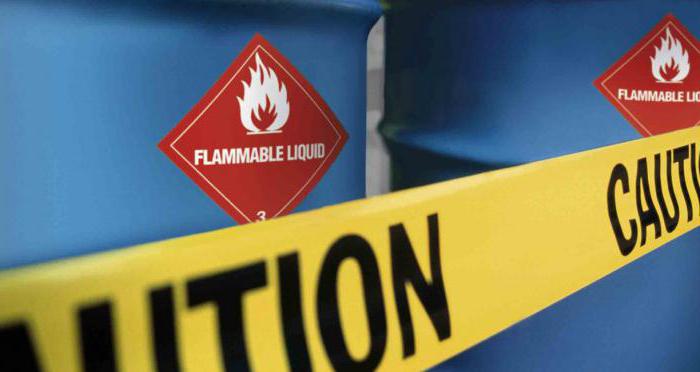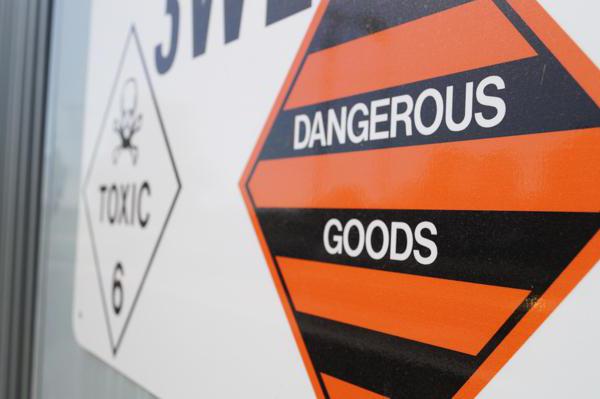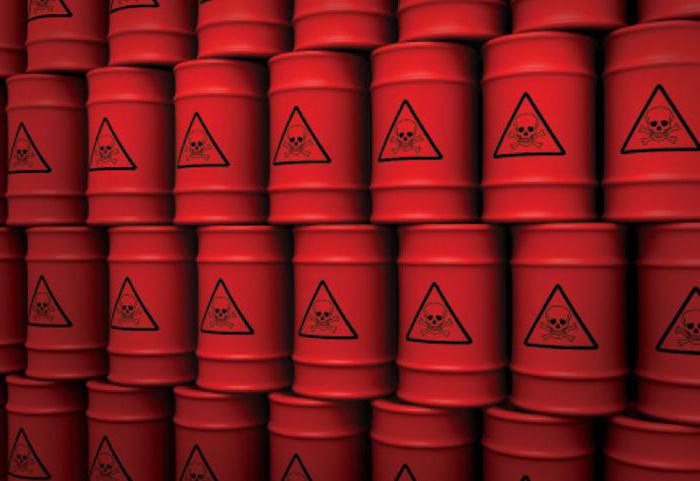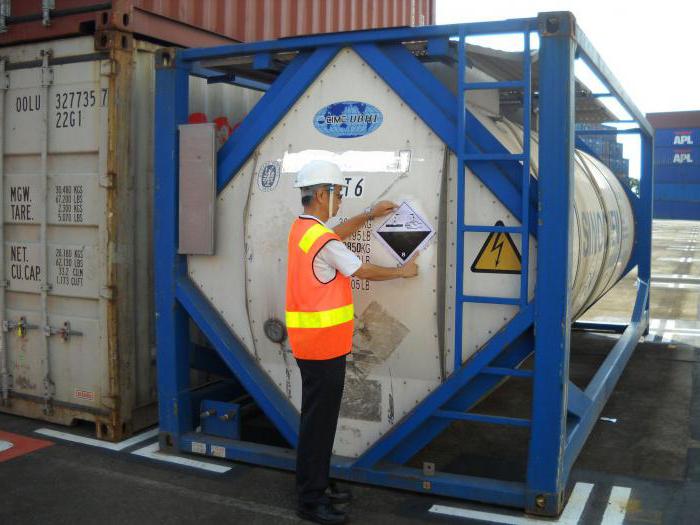Recently, in almost all areas of the economy a variety of synthetic substances have been used, and in particular this is often found in the manufacturing sector. In this regard, road transport of dangerous goods has become much more frequent, because this is one of the most convenient options for transporting these substances.
What it is?

In accordance with applicable laws, hazardous goods include various substances that, if transported, as well as during loading / unloading, can trigger an emergency such as an explosion or fire, which can cause significant damage to buildings, structures, devices, warehouses, as well as the vehicle itself and the surrounding living things.
The main legal document, in accordance with which the transportation of such substances is regulated, is the European Agreement, which lists in great detail how certain dangerous goods should be transported. The rules specified in this document must be observed when transporting any such goods, and the code itself is abbreviated as ADR.
In accordance with ADR, various international shipments are regulated, and they work in the countries that have signed it, at least two of them cross. In the overwhelming majority of cases, national regulations almost completely correspond to this code, but of course, there may be some peculiarities in them. The rules for the carriage of goods by road in ADR were developed in order to maximize the degree of road safety during such transportations, as well as to simplify all kinds of nomenclature procedures. In order to achieve these goals, the document contains a single classification, as well as a unified system of requirements that apply to transportation.
In our country, in addition to the specified set of requirements, there are also a number of other regulatory acts providing for the need for special training for drivers, as well as listing the various requirements for such transportation.
Dangerous goods are classified as such directly by the shipper. For this, the company turns to the competent authorities. For example, in accordance with the current Regulation on the basics, classification, as well as the assignment of the overwhelming majority of dangerous goods, the Federal Office for the Testing and Research of Materials is engaged.
Classes
Depending on the type of hazard, as well as various biological, chemical and physical properties, the dangerous goods can belong to one of nine classes, which include:
- flammable liquids;
- gases
- substances that emit flammable gases in case of direct contact with water;
- explosive products and substances;
- substances with the ability to spontaneous combustion;
- substances with increased toxicity;
- desensitized substances with increased explosion hazard;
- organic peroxides;
- infectious substances;
- oxidizing agents;
- corrosive;
- radioactive materials;
- other dangerous products and substances.
Each of the dangerous goods of the above refers to a particular class or subclass, while it is worth noting that the serial number of the class has no relation to the degree of danger. Hazard classes established by applicable law and must be indicated in the accompanying documentation.
If a certain dangerous goods refers to more than one type, the most significant in the links is marked as “primary danger”, while all the others are indicated with the mark “additional danger”.
Signs

In order to indicate certain hazardous properties, a certain sign is set on the packaging. Dangerous goods are marked according to a special system based on the above classification and designed for:
- easy recognition of dangerous goods at a distance due to the general appearance of existing danger signs (by color, shape and symbol);
- providing the first useful indication during loading and unloading.
Classification code
In order to indicate certain hazardous properties, as well as indicate physical and chemical characteristics that the sign on the packaging does not convey, the dangerous goods without fail has its own classification code, consisting of letters or letters designating a certain group of hazardous properties, and can also be supplemented by a figure indicating the chemical or physical properties of the cargo or its belonging to a particular group.
For hazardous substances belonging to the first class, the classification code includes the number of the subclass and the letters of a separate compatibility group. For the second class, it provides a figure indicating a specific state of aggregation, the type of a substance and a few letters that indicate their group of hazardous properties.
However, the classification of dangerous goods does not provide an appropriate code for the seventh class.
Identification

All such shipments must necessarily have the proper names and specific UN numbers. In addition, names and numbers are assigned to certain dangerous products and substances in accordance with the UN classification system.
Since in the overwhelming majority of cases, the requirements apply to a certain position of the list, before you begin to transport dangerous goods, they must be identified without fail. Due to this identification, the following information elements are easily identified:
- UN number
- corresponding shipping name;
- classification of dangerous goods, as well as possible types of additional hazard;
- packing group;
- numbers of samples of signs;
- specific classification code.
After all the above information elements are determined, before the dangerous goods are transported by road, the relevant requirements should be noted.
UN Identification

This number identifies the four-digit identification number of a specific product or substance, which is based on the United Nations Model Regulations.
Such identification by number is carried out in accordance with the Dangerous Goods List, which is listed in Table A of ADR in Chapter No. 3.2. This list includes all dangerous goods, all of which are indicated in the order of the indicated numbers. If the number of a substance is not included in this list, this indicates that the identification of the cargo was carried out incorrectly.
For those goods that are not specifically indicated by their name in the list, the UN number should be determined after determining the class, as well as all types of additional hazard and packing group. At the same time, it is worth noting that the only UN number is not always enough to carry out the identification of any dangerous cargo. In particular, such situations include:
- aerosol identification, which additionally also requires knowledge of the classification code or the number of iconic samples;
- paint identification, involving knowledge of the packaging group.
Identification by name
If the UN number is not known for a certain cargo, then in this case the rules for the transport of dangerous goods provide for identification by name, which is carried out in accordance with table B: “Alphabetical Index of Products and Substances of ADR”.
In the process of such identification, it is important to consider that in most cases, chemicals have several names:
- basic, which may be technical or biological;
- various synonyms;
- commercial name.
For example, carbon dioxide has several synonyms, such as carbon dioxide or carbon dioxide. In order to avoid problems that are associated with the use of different subjects of transportation, as well as all kinds of competent authorities of different names of the same cargo, the corresponding transport name is used in the process of transportation. The rules for the transport of dangerous goods provide for the determination of the proper shipping name in accordance with the requirements established in section 3.1.2.
Packing Group Accounting

It often happens that for different dangerous goods that belong to a certain UN number and have the same name, different requirements can be used if dangerous goods are transported by road. This is because such goods may have varying degrees of danger. For example, oil, as well as nitro and some other paints belong to the number "UN 1263 PAINT", but the requirements for the transportation of oil and nitro paints will be completely different.
If dangerous goods are transported in relation to substances or products that may be assigned to a specific UN number, for which several items with exactly the same name are provided in the list, then the identification group will need to take into account the packing group listed in column 4 of table A of chapter 3.2 ADR Criteria for determining a particular packing group are given in the same chapter.
Classification code accounting

In practice, there are often situations when the rules for the transport of dangerous goods by road provide for the mandatory registration of the number of samples of signs in the process of determining the conditions of transportation.
Thus, all types of aerosols are classified as UN 1950 AEROSOLS, and then, depending on their unique properties, they are divided into 12 other groups, each of which has its own requirements for road transportation. In this situation, in the process of determining how the rules for transporting dangerous goods by road will be determined, the numbers of hazard labels and their individual classification code should be taken into account. The code itself must be taken into account when transporting the following types of cargo:
- explosive articles and substances of the first class;
- products containing gases;
- chemicals that can be transported in liquid or solid state.
The corresponding numbers of the hazard labels are defined in the fifth column of the Dangerous Goods List, and the meanings and descriptions of the individual numbers are given in 5.2.2.2 of ADR.
Primary requirements
Before transportation, packaging or containers are marked accordingly and this is the direct responsibility of the sender. Labeling must be carried out in full compliance with the standards, and at the same time be legible and durable, so that if necessary it can be used to determine which dangerous goods are transported by this vehicle. Special attention should be paid to the fact that the labeling of goods of hazard classes 1, 2 and 7 provides for the mandatory indication of the shipping name.
At the moment, a whole system has been envisaged for how to inform about the dangers of certain cargoes, which includes:
- emergency card, which the cargo manufacturer must fill out in accordance with the unified sample, which includes a list of all necessary measures aimed at eliminating the possible consequences in the event of a traffic accident;
- special information plates fixed at the rear and front of the rolling stock;
- information card, in which there is a transcript of various codes of measures indicated in the information plate (the card must be in those bodies that are responsible for the elimination of emergency consequences).
Transport requirements

Also, the vehicles used for transportation must comply with a number of requirements. In particular, this concerns the mandatory presence of at least one chock, which will correspond to the dimensions and weight of the vehicle. Also, the car must have at least two warning signs with illumination and independent support, and in addition, the crew must have a special form of bright color and flashlights.
Special requirements are imposed on the technical condition of the vehicle. In particular, it should have a wear-resistant brake system with an emergency analogue, and if we are talking about a vehicle with a mass of more than 16 tons, the use of an anti-lock brake system is already provided for here. It is also important to protect all the electrical circuits present with special limiters, fuses and switches, and in addition, special attention is paid to equipping the vehicle with a special device that allows you to disconnect the battery directly from the driver's cab.
A road train that carries dangerous goods, in turn, can include only one trailer. If the transportation of dangerous goods is carried out in tanks, then in this case the vehicle must be equipped with a specialized bumper, which provides protection against impact. The minimum allowable distance from the extreme point of the tank for securing the bumper to the road train is 10 cm.
All these rules must be taken into account during the transportation process, as otherwise you may incur administrative or more serious liability.








